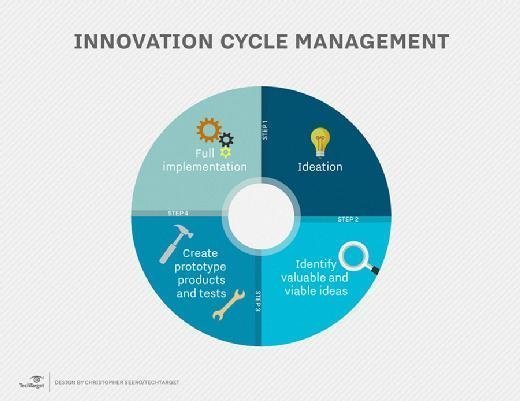innovation management
What is innovation management?
Innovation management involves the process of managing an organization's innovation procedure, starting at the initial stage of ideation, to its final stage of successful implementation. It encompasses the decisions, activities and practices of devising and implementing an innovation strategy.
According to Gartner, innovation management is a business discipline that aims to drive a sustainable innovation process or culture within an organization. Oftentimes, these innovation management initiatives utilize a disruptive method of change to transform business.
With digital transformation, organizations are faced with the need to innovate more and innovate quickly. Innovation drives business growth and helps organizations stay ahead of their competitors.
Innovation management helps generate new business models and creates new products, services and technologies designed for the changing market. Proper innovation management also boosts customer satisfaction and employee engagement.
Innovation management methods
Broadly speaking, innovation can be incremental, breakthrough or disruptive.
- Incremental: In an era where businesses are required to constantly reinvent themselves, incremental innovation helps them thrive by constantly improving current products, services, processes or methods.
- Breakthrough: A breakthrough innovation refers to technological advancements that can boost the level of a product or service, within an existing category, ahead of its competitors.
- Disruptive: Any ideas that are capable of radically changing the market behavior after being implemented are disruptive innovations.
Achieving innovation management success
For the innovation management process to be successful, it is essential that the company support an innovation culture and make employees feel valued. This will encourage employees to generate quality ideas in return.
Organizations can leverage collaborative technology like social networking to get feedback, which helps generate a steady stream of ideas from stakeholders both within and outside the company.

To make innovation management a routine part of business, many organizations follow a disciplined and cyclic approach, including the following:
- Ideation is the first step to innovation and incentives and feedback help encourage a steady flow of ideas.
- The next step in a well-managed innovation process is to identify the most valuable and viable ideas. Companies can then move forward to create prototypes based on the shortlisted ideas and implement them to see how they work.
- In the final step toward full implementation, it is important to evaluate the outcome to see whether the desired business goals were met once the ideas were implemented.
It is also necessary to engage the C-suite in discussions about innovation management to make sure that the ideas generated are in line with business goals.
Organizations are also increasingly looking for innovation managers, who are equipped with specific leadership skills, to drive innovation and oversee the innovation management process.








